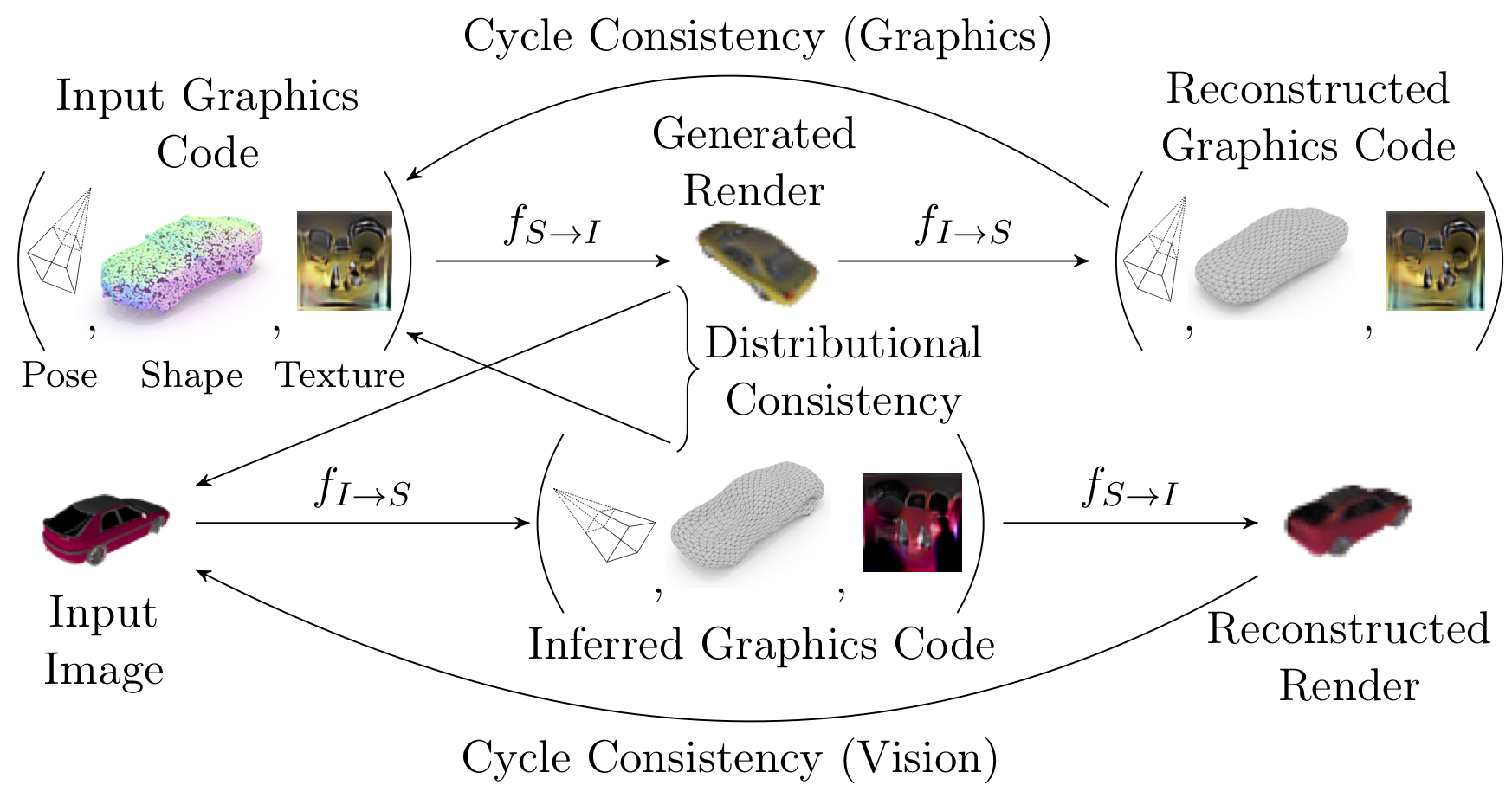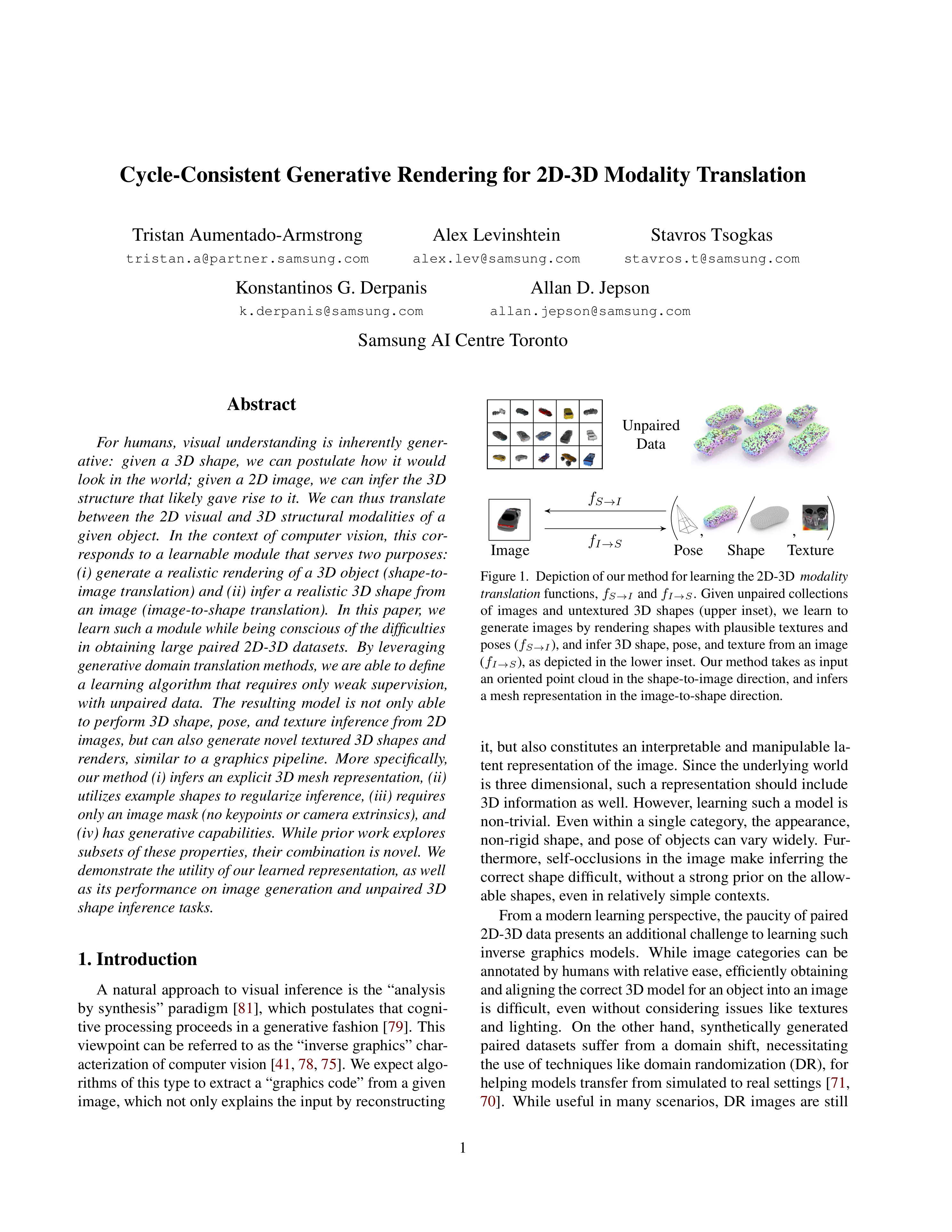|
For humans, visual understanding is inherently generative: given a 3D shape, we can postulate how it would look in the world; given a 2D image, we can infer the 3D structure that likely gave rise to it. We can thus translate between the 2D visual and 3D structural modalities of a given object. In the context of computer vision, this corresponds to a learnable module that serves two purposes: (i) generate a realistic rendering of a 3D object (shape-to-image translation) and (ii) infer a realistic 3D shape from an image (image-to-shape translation). In this paper, we learn such a module while being conscious of the difficulties in obtaining large paired 2D-3D datasets. By leveraging generative domain translation methods, we are able to define a learning algorithm that requires only weak supervision, with unpaired data. The resulting model is not only able to perform 3D shape, pose, and texture inference from 2D images, but can also generate novel textured 3D shapes and renders, similar to a graphics pipeline. More specifically, our method (i) infers an explicit 3D mesh representation, (ii) utilizes example shapes to regularize inference, (iii) requires only an image mask (no keypoints or camera extrinsics), and (iv) has generative capabilities. While prior work explores subsets of these properties, their combination is novel. We demonstrate the utility of our learned representation, as well as its performance on image generation and unpaired 3D shape inference tasks.
|



